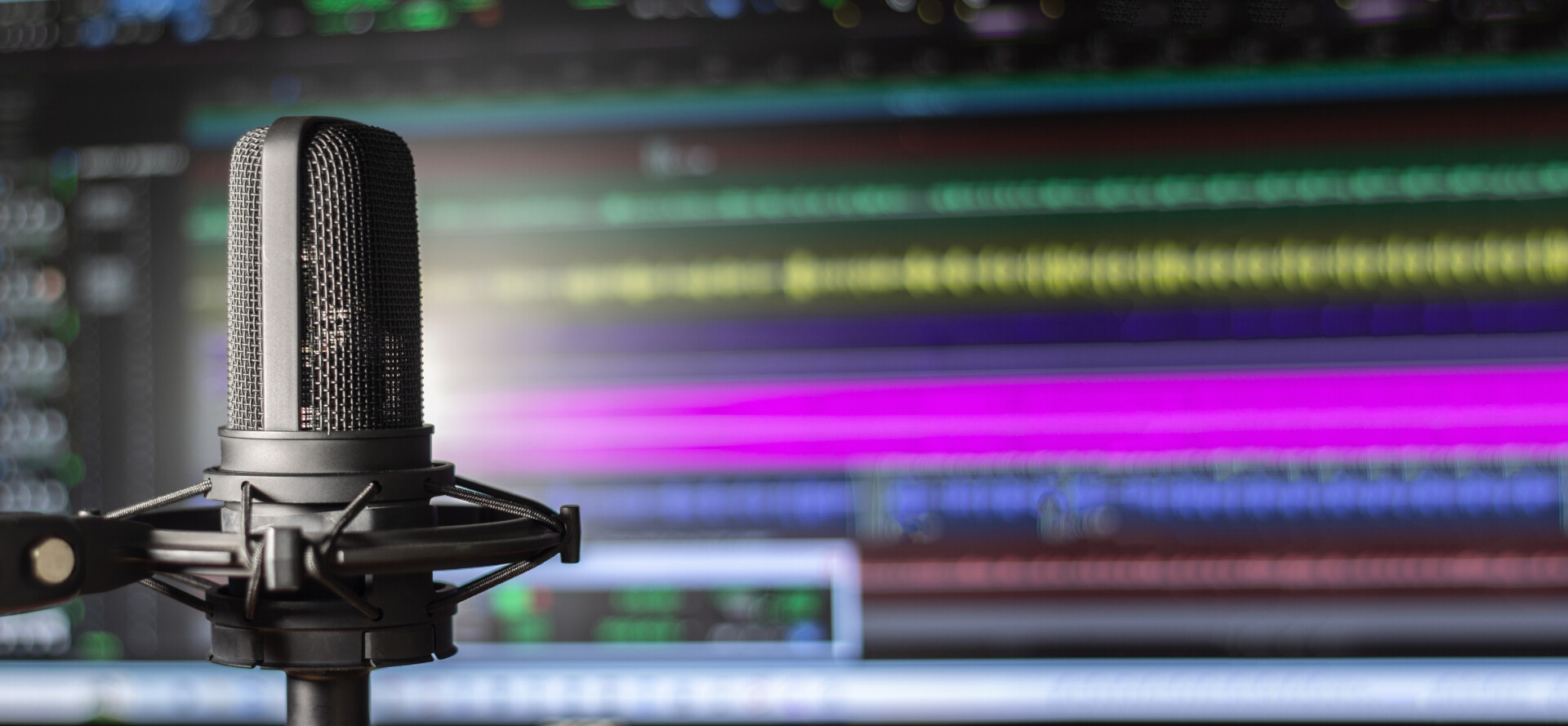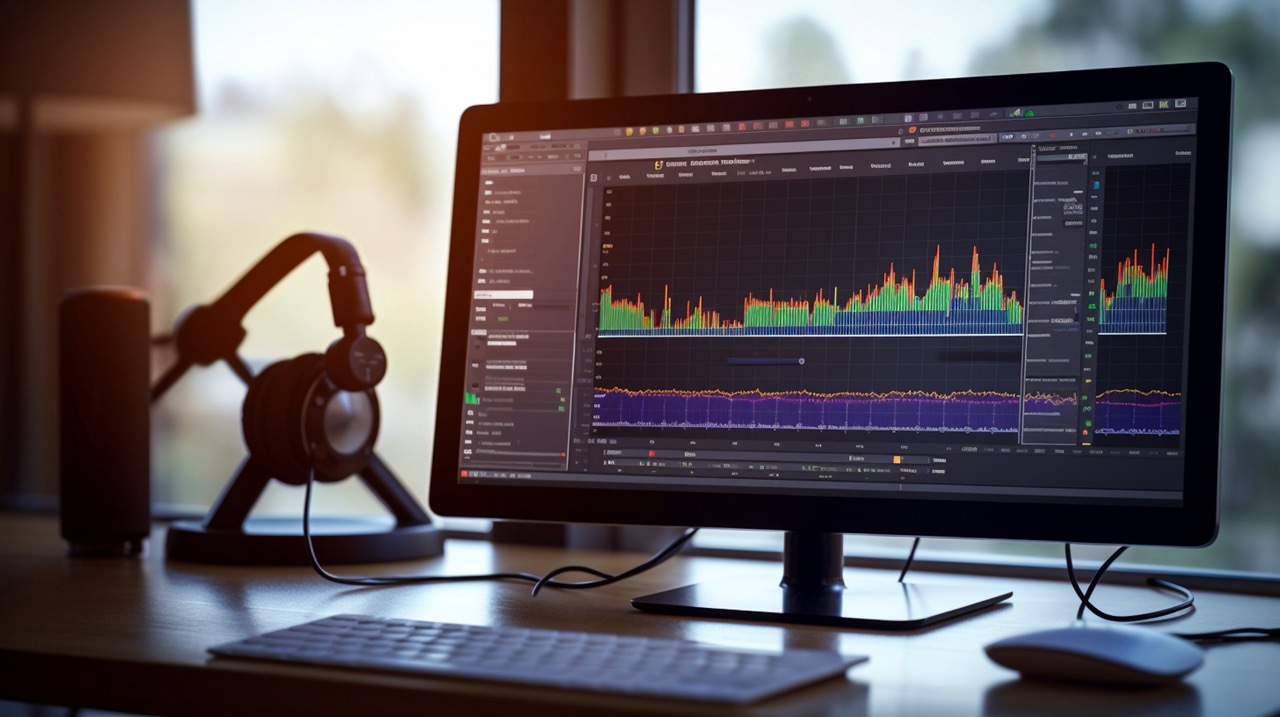AI-Driven Audio Processing Solutions.
Make better and more accessible audio content and transform monitoring processes in industrial and agricultural environments with AI-enhanced signal-processing methods.

Use real-time audio sensors to monitor machinery in the industrial processes and livestock in the farming industry or generate sound effects and denoise speech to achieve the best results for videos and podcasts. You can also make your content more accessible to users by utilising text-to-speech and speech-to-text conversions to increase user accessibility. Services like denoising, voice cloning and watermarking can help you save time and resources or increase the security of your files.
With our team of technology experts, you can utilise all of the above to meet your needs and create a better experience for end users across industries. Find the best signal processing applications that can make a change for your company and customers.
AI-Driven Sound and Voice Processing Applications
From speech recognition to sound-based machinery monitoring. You may benefit from various practical uses of audio processing.
Digital Signal Processing and Speech
Speech recognition, enhancement, and generation solutions are viral trends in technology. Artificial intelligence and machine learning help with different types of human speech processing. Here’s an overview of the key concepts and technologies.
Speech Recognition (Speech-to-Text)
It involves complex processes that deal with variations in language, accent, pronunciation, and context. Speech recognition systems typically use acoustic models (to understand sounds) and language models (to understand grammar and context). It can be a great solution to make services and products more accessible to hard-of-hearing users. You can learn more about speech recognition solutions in our article dedicated to practical applications of audio processing.
Speech Synthesis (Text-to-Speech)
These systems use linguistic analysis to process the input text and generate synthetic speech that mimics human voices with varying degrees of naturalness and expressiveness. Using this technology helps to make content more accessible for those who struggle with reading. You may also find it useful in settings in which reading might be difficult or less convenient than listening. For example, during engaging manual work or in crowded public spaces, where access to the text is limited.
Authentication with Speaker Recognition
It involves identifying a person from their voice. It can be used for authentication (verifying a speaker’s identity) or identification (determining who is speaking among a group). Speaker voice recognition systems analyse features such as pitch, tone, and speech patterns.
Speech Denoising Methods
This speech enhancement technique reduces noise from existing audio files. It can be beneficial for speech-based content like podcasts, interviews and other recordings of human talks, as it can provide studio-like sound quality without using specialist equipment.
Case Study: Turning Noise into Clarity – Revoize Speech Enchancement
We’ve build an audio processing tool capable of distinguishing and eliminating a wide array of background noises from speech. From urban disturbances to indoor reverberations, Revioze clears the audio while preserving the natural tone and clarity of human speech.


AI-Driven Audio and Signal Processing for the Manufacturing and Warehousing Industry
Use signal processing for automation and predictive maintenance in your facility.

Early malfunction detection: Installing acoustic cameras on sensitive, moving and rotating parts of machines helps to analyse the vibrations and see patterns that differ from well-functioning ones. Detecting sound anomalies enables quick reaction for malfunction prevention. It can help you save significantly on downtime or costly maintenance in case of sudden breakdowns. It will also help maintain personnel safety, as timely reactions based on predictions will reduce breakdown-related risks.

Noise level monitoring: Applying audio processing methods to monitor noise levels in particularly noisy areas can improve workers’ safety and ensure that they use ear protection when necessary to prevent noise damage.

Improved communication: Denoising techniques can help improve speech clarity and remove or reduce unwanted noise, especially in large facilities. When adapted to intercoms, it can aid workers in seamless communication.

Better obstacle detection for autonomous vehicles: Audio processing can also be used in autonomous guided vehicles for improved obstacle detection to improve the mechanisms to avoid collisions when moving around the facility. They can also utilise sound cues to identify and sort items.

AI-Powered Audio and Signal Processing for Agriculture and Farming
Monitor the well-being of plants and livestock for timely reactions and informed decision-making.

Monitoring livestock health and well-being: By installing cameras in the vicinity of the animals and by analysing the sounds they make, you can determine their current state and if an intervention may be necessary.

Early pest detection in crops: Using sound processing can detect and analyse the sound typically made by pests. Early detection will help you to take targeted action before an infestation becomes widespread, reducing the need for broad-spectrum pesticides. Certain plant diseases can alter the sound of the wind rustling through crops or affect the plant’s response to stress signals. By monitoring these subtle changes, you can identify diseased areas for treatment.

AI-Based Audio and Signal Processing for the Music and Gaming Industries
Generate and modify sounds for more realistic and immersive experiences.
Audio and Signal Processing for Gaming

Sound effect generation: Audio processing can save a lot of time and resources when you use it to generate recurring sound effects, for example, a person singing in the shower, a traffic rush, or everyday commotion at a store. Since these sounds are often repetitive in-game, adding them automatically can be a good choice.

Dynamic audio and adaptive soundtracks: You can automatically adjust music dynamically based on gameplay with audio signal processing. For instance, the intensity of the background music might increase during battle scenes or calm down during exploration, enhancing the emotional impact.
Audio and Signal Processing for Music

Creating virtual instruments and unique effects: Synthesisers and digital audio workstations (DAWs) use audio processing techniques to generate, modify, and manipulate sound waves to produce new sounds or mimic traditional instruments.

Production and mastering: Signal processing is also essential for mixing and mastering tracks, involving equalisation (EQ), compression, reverb, and other effects to balance different elements of a track, improve sound quality, and ensure consistency across different playback systems. It can also help isolate specific tracks from an audio file, like vocals, instruments, etc.

Spatial experiences: Audio processing technologies enable the creation of spatial audio experiences, where listeners can perceive sound coming from various directions, including above and below. This immersive audio is crucial for headphones and home theatre systems.

AI-Driven Speech and Audio Processing Services
AI-powered sound restoration, generation and enhancements for your needs.
There’s a range of services that can help your business and customers that utilise audio processing. Below, you’ll find some of the most important ones.
Watermarking
Watermarking is a methodology for invisibly watermarking the audio or video streams with a unique receiver identifier. Ideally, the watermark should be insensitive to the compression and transformations of the audio or video. You can use it to track the data’s potential leak source by retrieving the receiver ID from the leaked stream.
Audio file watermarking is an essential tool to fight deep fakes. Such a digital watermark could not be altered in any way, even if the file would be transformed or redone into a different format. In case of a potential leak, it can be traced to the source and identified quickly, which can be beneficial for recordings of conferences or critical meetings.
Audio Speech Denoising and Manipulation
Background sounds and unwanted noise pose a considerable challenge for broadcasters and content creators, especially those who don’t have access to professional recording equipment. Speech enhancement software can help reduce noise and make the voice sound as clear as in a studio. Separating the speech audio signal from the background noise can improve the clarity and intelligibility of the transmitted speech.
Our Speech Denoising Project: Revoize
At DAC.digital, we’ve developed an AI-based platform to remove background noise from audio files and voice recordings. The intuitive web application allows you to upload a voice recording, making it sound clean as if it was recorded in a studio. And we have examples to back it up.
Text-to-Speech Generation and Voice Cloning
Speech synthesis connected with voice cloning allows for synthesising a specific person’s voice in cases when, for instance, the speaker is unavailable or costly. Realistic, expressive speech synthesis is crucial for a human-like experience for the listeners. It can also be helpful in cases when some parts of the speech require re-recording, and the actor isn’t available at a given moment. It can save the production from delays.
Like generative AI for text and images, text-to-speech generation will enable the creation of sounds and sound effects from text prompts. Solutions that allow short videos from text prompts can already be observed.
Video Analysis
For sports events, we can analyse videos from multiple cameras to reconstruct 3D details of the specific game (tennis, football, basketball) and generate statistics by tracking the players among numerous cameras, rebuilding their body movements, and summarising the most important statistics.

Transform Your Business with Our AI Expertise
Take your business operations to the next level with our solutions in AI-driven sound and signal processing. We will help you achieve your goals with our expertise, whether speech restoration, enhancements or generation. That includes choosing the best technologies and implementations tailored to your needs. Don’t hesitate to contact us, and let’s talk.
Estimate your project.


